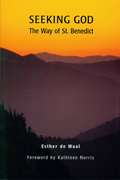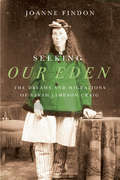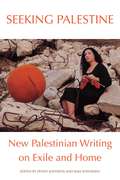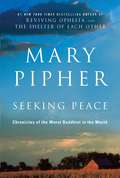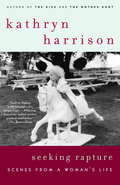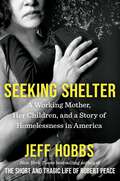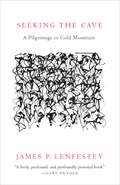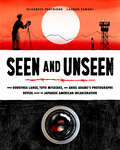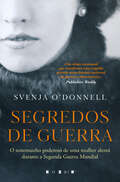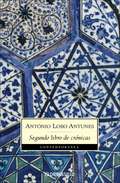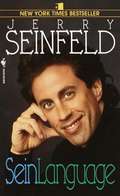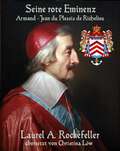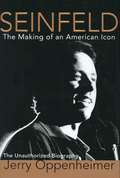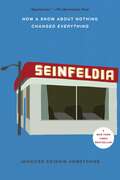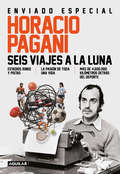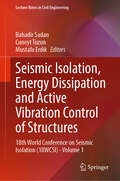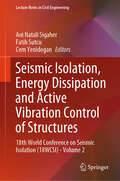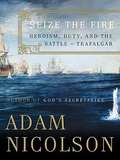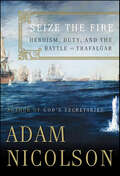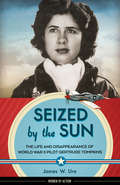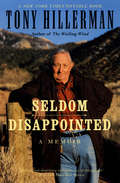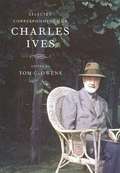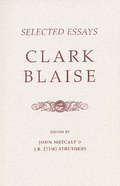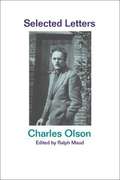- Table View
- List View
Seeking God
by Esther De WaalHow laypeople can live according to the Rule of St. Benedict. Benedictine spirituality, de Waal reminds us, is grounded in the idea that God's presence is everywhere, and that it is our job to seek it out, remembering that the material and the spiritual are not distinct and separate realms, but that even our most ordinary manual work "is to be a constant reminder of the reality of the Incarnation." To live in the holistic manner envisioned by St. Benedict, de Waal says, is to live knowing that "God does not demand the unusual, spectacular, the heroic," but rather "that I do the most ordinary, often dreary and humdrum things that face me each day with a loving openness that will allow them to become my own immediate way to God." This is the monastic way, in the traditions of both Christianity and Buddhism, yet it is also a way that is open to anyone.
Seeking Our Eden
by Joanne FindonAlthough few nineteenth-century rural Canadian women could read and write well, Sarah Jameson Craig (1840-1919) was not only literate but eloquent. Unlike many women writers of her time, Craig lived at the bottom of the economic ladder. Nevertheless, she dared to dream the utopian dreams more commonly associated with educated women from the middle and upper classes. Craig vividly documented her attempt to run away at age fifteen, her plans to found a utopian colony based on alternative medicine and women’s dress reform, and her lifelong crusade for women's equality. Quoting liberally from Sarah Craig's unpublished diaries and memoir, Seeking Our Eden sets Craig's life writing within the context of her early days in New Brunswick, her later migrations to New Jersey and then westward to Saskatchewan and British Columbia, and the American-based reform and utopian movements that stirred her imagination. Convinced that the tight corsets and long skirts demanded by conventional fashion undermined the fight for women's equality, Craig wore the "reform dress" - a short dress over trousers - despite society's disapproval, and rejected opiate- and alcohol-based medicines in favour of the water cure. Even today, when the way women dress remains an issue, and skepticism about conventional medicine still fuels alternative health movements, Sarah Craig's early feminist voice from the margins of Canada continues to be relevant and compelling.
Seeking Our Eden: The Dreams and Migrations of Sarah Jameson Craig
by Joanne FindonAlthough few nineteenth-century rural Canadian women could read and write well, Sarah Jameson Craig (1840-1919) was not only literate but eloquent. Unlike many women writers of her time, Craig lived at the bottom of the economic ladder. Nevertheless, she dared to dream the utopian dreams more commonly associated with educated women from the middle and upper classes. Craig vividly documented her attempt to run away at age fifteen, her plans to found a utopian colony based on alternative medicine and women’s dress reform, and her lifelong crusade for women's equality. Quoting liberally from Sarah Craig's unpublished diaries and memoir, Seeking Our Eden sets Craig's life writing within the context of her early days in New Brunswick, her later migrations to New Jersey and then westward to Saskatchewan and British Columbia, and the American-based reform and utopian movements that stirred her imagination. Convinced that the tight corsets and long skirts demanded by conventional fashion undermined the fight for women's equality, Craig wore the "reform dress" - a short dress over trousers - despite society's disapproval, and rejected opiate- and alcohol-based medicines in favour of the water cure. Even today, when the way women dress remains an issue, and skepticism about conventional medicine still fuels alternative health movements, Sarah Craig's early feminist voice from the margins of Canada continues to be relevant and compelling.
Seeking Palestine: New Palestinian Writing on Exile and Home
by Raja Shehadeh Penny JohnsonHow do Palestinians live, imagine and reflect on home and exile in this period of a stateless and transitory Palestine, a deeply contested and crisis-ridden national project, and a sharp escalation in Israeli state violence and accompanying Palestinian oppression? How can exile and home be written?<P><P>In this volume of new writing, fifteen innovative and outstanding Palestinian writers-essayists, poets, novelists, critics, artists and memoirists-respond with their reflections, experiences, memories and polemics. What is it like, in the words of Lila Abu-Lughod, to be "drafted into being Palestinian?" What happens when you take your American children-as Sharif Elmusa does-to the refugee camp where you were raised? And how can you convince, as Suad Amiry attempts to do, a weary airport official to continue searching for a code for a country that isn't recognized?Contributors probe the past through unconventional memories, reflecting on 1948 when it all began. But they are also deeply interested in beginnings, imagining, in the words of Mischa Hiller, "a Palestine that reflects who we are now and who we hope to become." Their contributions-poignant, humorous, intimate, reflective, intensely political-make for an offering that is remarkable for the candor and grace with which it explores the many individual and collective experiences of waiting, living for, and seeking Palestine.Contributors include: Lila Abu-Lughod, Susan Abulhawa, Suad Amiry, Rana Barakat, Mourid Barghouti, Beshara Doumani, Sharif S. Elmusa, Rema Hammami, Mischa Hiller, Emily Jacir, Penny Johnson, Fady Joudah, Jean Said Makdisi, Karma Nabulsi, Raeda Sa'adeh, Raja Shehadeh, Adania Shibli.
Seeking Peace
by Mary PipherIn this thoughtful and inspiring memoir, the author of the New York Times bestsellers Reviving Ophelia, The Shelter of Each Other, and Another Country explores her personal search for understanding, tranquility, and respect through her work as a psychologist and seeker. "There are three kinds of secrets," Mary Pipher says in Seeking Peace: Chronicles of the Worst Buddhist in the World. "Those we keep from everyone, those we keep from certain people, and those we keep from ourselves. Writing this book forced me to deal with all three. " After decades of exploring the lives of others through her writing and therapy, Mary Pipher turns her attention to herself-culling insights from her own life to highlight the importance of the journey, not just the destination. Like most lives, Pipher's is filled with glory and tragedy, chaos and clarity, love and abandonment. She spent her childhood in small Nebraska towns, the daughter of a doctor mother and a restless jack-of-all-trades father. Often both of her parents were away and Pipher and her siblings lived as what she calls "feral children. " Later, as an adult and a therapist, Pipher was able to do what she most enjoyed: learn about the world and help others. After the surprising success of Reviving Ophelia, she was overwhelmed by the attention and demands on her time. In 2002, after a personal crisis, Pipher realized that success and fame were harming her, and she began working to find a quieter, more meditative life that would carry her toward self-acceptance and joy. In Seeking Peace, Mary Pipher tells her own remarkable story, and in the process reveals truths about our search for happiness and love. While her story is unique, "the basic map and milestones of my story are universal," she writes. "We strive to make sense of our selves and our environments. " In Seeking Peace, Pipher reflects on her life in a way that allows readers to reimagine theirs.
Seeking Rapture
by Kathryn HarrisonA NEW YORK TIMES NOTABLE BOOKIn this exquisite book of personal reflections on a woman's life as a child, wife, and mother, Kathryn Harrison, "a writer of extraordinary gifts" (Tobias Wolff), recalls episodes in her life, exploring how the experiences of childhood recur in memory, to be transformed and sometimes healed through the lives we lead as adults. At the heart of Seeking Rapture is the notion that a woman's journey is a continuous process of transformation, an ongoing transcendence and re-creation of self.From the Trade Paperback edition.
Seeking Shelter: A Working Mother, Her Children, and a Story of Homelessness in America
by Jeff HobbsFrom the bestselling author of The Short and Tragic Life of Robert Peace, a powerful portrayal of American homelessness that follows a single mother of six in Los Angeles courageously struggling to keep her family together and her children in school amidst the devastating housing crisis.In the tradition of Evicted and Invisible Child, Jeff Hobbs masterfully explores America&’s housing crisis through the real-life story of Evelyn. This is Hobbs&’s first book since The Short and Tragic Life of Robert Peace that focuses on a single character and her extraordinarily illuminating journey. In 2018, poverty and domestic violence cast Evelyn and her children into the urban wilderness of Los Angeles, where she avoids the family crisis network that offers no clear pathway for her children to remain together and in a decent school. For the next five years, Evelyn works full time as a waitress yet remains unable to afford legitimate housing or qualify for government aid. All the while she strives to provide stability, education, loving memories, and college aspirations for her children even as they sleep in motels and in her car, living in fear of both her ex and the nation&’s largest child welfare agency. Eventually Evelyn encounters Wendi Gaines, a recently trained social worker who decades earlier survived her own abusive marriage and housing crisis. Evelyn becomes one of Wendi&’s first clients, and the relationship transforms them both. Told from the perspectives of Evelyn, Wendi, and Evelyn&’s teenaged son, Orlando, Seeking Shelter is a powerful and urgent exploration of the issues of homelessness, poverty, and education in America—a must-read for anyone interested in understanding not just social inequality and economic disparity in our society but also the power of a mother&’s love and vision for her kids.
Seeking the Cave: A Pilgrimage to Cold Mountain
by James P. LenfesteyIn this transformative book, award-winning poet and essayist James Lenfestey makes an epic journey across the world to find the Cold Mountain Cave, a location long believed to exist only in myths and the ancient home of his idol, Han Shan, author of the Cold Mountain poems. Lenfestey's voyage takes him from the Midwestern United States to Tokyo to a road trip across the expanse of China with frequent excursions to the country's rich historical and cultural landmarks. As he makes his way to the cave, Lenfestey learns more than history or geography; he discovers his identity as a writer and a poet. Interspersed with poems by both the author and Han Shan, Seeking the Cave will appeal to lovers of poetry and travel narrative alike.
Seen and Unseen: What Dorothea Lange, Toyo Miyatake, and Ansel Adams's Photographs Reveal About the Japanese American Incarceration
by Elizabeth PartridgeThis important work of nonfiction features powerful images of the Japanese American incarceration captured by three photographers—Dorothea Lange, Toyo Miyatake, and Ansel Adams—along with firsthand accounts of this grave moment in history. <p><p>Three months after Japan attacked Pearl Harbor in 1941, US President Franklin D. Roosevelt ordered the incarceration of all Japanese and Japanese Americans living on the West Coast of the United States. Families, teachers, farm workers—all were ordered to leave behind their homes, their businesses, and everything they owned. Japanese and Japanese Americans were forced to live under hostile conditions in incarceration camps, their futures uncertain. <p><p>Three photographers set out to document life at Manzanar, an incarceration camp in the California desert: Dorothea Lange was a photographer from San Francisco best known for her haunting Depression-era images. Dorothea was hired by the US government to record the conditions of the camps. Deeply critical of the policy, she wanted her photos to shed light on the harsh reality of incarceration. <p><p>Toyo Miyatake was a Japanese-born, Los Angeles–based photographer who lent his artistic eye to portraying dancers, athletes, and events in the Japanese community. Imprisoned at Manzanar, he devised a way to smuggle in photographic equipment, determined to show what was really going on inside the barbed-wire confines of the camp. <p><p>Ansel Adams was an acclaimed landscape photographer and environmentalist. Hired by the director of Manzanar, Ansel hoped his carefully curated pictures would demonstrate to the rest of the United States the resilience of those in the camps. <p><p>In Seen and Unseen, Elizabeth Partridge and Lauren Tamaki weave together these photographers' images, firsthand accounts, and stunning original art to examine the history, heartbreak, and injustice of the Japanese American incarceration. <p><p> AWARENESS OF AMERICAN HISTORY: This impactful book engages with an underrepresented topic in American history, and highlights important and timely themes like primary sources, censorship, and visual literacy.
Segredos de Guerra: O Testemunho Poderoso de Uma Mulher Alemã Durante a Segunda Guerra Mundial
by Svenja O'DonnellQue segredos obscuros se escondem por detrás do silêncio das mulheres que sobrevivem à guerra? Inge, a reservada avó da autora, Svenja O’Donnell, nunca falou sobre o seu passado. Tudo o que a família sabia é que ela crescera numa cidade que já não existe — Königsberg, na Prússia Oriental, hoje um lugar praticamente desconhecido —, de onde fugiu com a família perto do fim da Segunda Guerra Mundial, para nunca mais voltar. Mas tudo muda quando Svenja decide visitar essa localidade, agora conhecida como Kaliningrado, e telefona à avó. Nesse momento, algo faz quebrar a reserva de Inge, que começa finalmente a falar. Svenja reconstrói então a notável vida da avó, desde a ascensão nazi até aos brutais anos do pós-guerra, revelando uma história de amor, traição, terror, fuga,fome e violência. E, finalmente, descobre um terrível segredo com mais de 60 anos. Segredos de Guerra ouve as vozes que muitas vezes faltam na nossa narrativa histórica— as de mulheres que enfrentaram terríveis desafios na guerra e que se remeteram ao silêncio. É um livro que nos faz igualmente refletir sobre a identidade alemã e o trauma herdado após a Segunda Guerra Mundial. «O ponto de vista que diferencia este livro é a visão abrangente do sofrimento alemão. A vida de Inge ilustra o facto de as mulheres arcarem em silêncio com o fardo da tristeza gerada por eventos que fogem ao seu controlo.» The Telegraph «Um relato excecional que transforma uma tragédia privada numa história universal de guerra e sobrevivência.» Publishers Weekly «Por vezes tocante e surpreendente, a narrativa de Svenja O’Donnell oferece uma visão honesta de como a força, a fraqueza e a resiliência podem moldar quem somos e quem nos tornamos. Um acrescento bem-vindo às memórias da Segunda Guerra Mundial.» Library Journal «Um testemunho emocionante e esclarecedor, que merece ser amplamente conhecido, que descreve em pormenor as privações que os cidadãos alemães enfrentaram durante a guerra e uma parte sombria da história dinamarquesa.» Booklist «Uma narrativa vívida, alicerçada numa meticulosa pesquisa, que oferece um relato incisivo e multifacetado de traumas familiares, dos perigos do nacionalismo e do antissemitismo, e da situação dos refugiados.» Publishers Weekly «Um livro de memórias de guerra que não apenas traça o caminho de sobrevivência de uma família, como analisa corajosamente os horrores herdados de um conflito que marcou uma nação. Svenja escreve com uma clareza impressionante e uma profunda empatia pelas mulheres que normalmente são esquecidas da História: aquelas cujas vidas são destruídas pelo trauma da guerra e silenciadas pela paz que se lhe segue.» Irish Times «Livros sobre a Segunda Guerra Mundial — e há tantos — tendem a concentrar-se em grandes nomes. Menos comuns são os livros sobre o cidadão comum cuja vida foi devastada pela guerra — e ainda menos comuns são os livros sobre o cidadão alemão comum. Através de uma reportagem meticulosa e uma narrativa sensível e convincente, esta torna-se a história emocionante de uma qualquer pessoa que viva numa zona de guerra. Uma história fascinante e importante que se concentra tão firmemente e com tanto pormenor — físico, temporal e emocional — em Inge e na sua família que se torna universal.» Star-Tribune
Segundo libro de crónicas
by António Lobo AntunesLa vida en todas sus formas, las anécdotas de infancia y el recuerdo de amigos desaparecidos, una calle de Lisboa... La vida en todas sus formas, las anécdotas de infancia y el recuerdo de amigos desaparecidos, una calle de Lisboa, un árbol en el jardín familiar, un viaje a Italia, una noche en un hotel de Munich, la entrega de un premio literario, la inspiración, la dificultad de escribir... La vida de António Lobo Antunes en todos sus aspectos conforma el universo de las crónicas que el autor portugués viene ofreciendo desde hace años en distintas publicaciones periódicas de todo el mundo. Estas crónicas, y las que se publicarán en sucesivos volúmenes, representan lo más parecido a la autobiografía de uno de los escritores cruciales del panorama literario mundial. Reseña:«En este Segundo libro de crónicas, encontraremos, para los más escépticos y reticentes aún, algunas de las mejores muestras, recetas concentradas o elíxires con los que paladear de forma adecuada al que es considerado normalmente como uno de los escritores vivos más importantes.»ABC Cultural
SeinLanguage
by Jerry SeinfeldThose who have watched Jerry Seinfeld's shows will hear his voice in this humorous writing.
Seine rote Eminenz: Armand-Jean du Plessis de Richelieu
by Laurel A. RockefellerPriester. Geliebter. Staatsmann. Kardinal Armand-Jean du Plessis, Duc de Richelieu, ist einer der berühmtesten – oder berüchtigtsten – Politiker aller Zeiten. Er wurde im bekannten Dumas-Roman „Die drei Musketiere“ zum Bösewicht gemacht, der echte Mann war ein engagierter, dem König und dem Land treuer Staatsdiener. Er war ein Mann der Logik und Vernunft, der unser Denken über Nationen und Nationalität veränderte. Er säkularisierte Kriege zwischen Ländern, förderte die Künste um des öffentlichen Wohls willen, begründete die erste Zeitung Frankreichs und erschuf Frankreich als das moderne Land, das wir heute kennen. Angefüllt mit Musik der Epoche, Tanz und viel Romantik, versetzt Sie „Seine rote Eminenz“ zurück an den Hof von König Louis XIII., mit all seiner pulsierenden Lebendigkeit und Farbe. Enthält acht zeitgenössische Lieder sowie Gebete, eine detaillierte Zeitleiste und eine umfangreiche Bibliografie, damit Sie noch mehr lernen können.
Seinfeld: The Making of an American Icon
by Jerry OppenheimerThe never-before-told story of how Jerry Seinfeld made his dream come true -- of how this very ambitious, extremely driven, compulsively perfectionistic carefully worked his way up through the knock-down-drag-out world of stand-up comedy as it began to explode in the mid-1970s, & how he went on to co-create in the late 80s what is considered to be the most successful TV sitcom in its history. From the start, Jerry has been extremely private about all aspects of his personal life. For more than a year, Oppenheimer conducted in-depth interviews with scores of Jerry s closes friends, family members, bus. assoc., lovers, & fellow comedians who spoke candidly, painting a riveting portrait of the beloved & talented comedian.
Seinfeldia: How a Show About Nothing Changed Everything
by Jennifer Keishin Armstrong"Her book, as if she were a marine biologist, is a deep dive...Perhaps the highest praise I can give Seinfeldia is that it made me want to buy a loaf of marbled rye and start watching again, from the beginning." --Dwight Garner, The New York Times Book Review The hilarious behind-the-scenes story of two guys who went out for coffee and dreamed up Seinfeld--the cultural sensation that changed television and bled into the real world, altering the lives of everyone it touched.Comedians Larry David and Jerry Seinfeld never thought anyone would watch their silly little sitcom about a New York comedian sitting around talking to his friends. NBC executives didn't think anyone would watch either, but they bought it anyway, hiding it away in the TV dead zone of summer. But against all odds, viewers began to watch, first a few and then many, until nine years later nearly forty million Americans were tuning in weekly. In Seinfeldia, acclaimed TV historian and entertainment writer Jennifer Keishin Armstrong celebrates the creators and fans of this American television phenomenon, bringing readers behind-the-scenes of the show while it was on the air and into the world of devotees for whom it never stopped being relevant, a world where the Soup Nazi still spends his days saying "No soup for you!", Joe Davola gets questioned every day about his sanity, Kenny Kramer makes his living giving tours of New York sights from the show, and fans dress up in Jerry's famous puffy shirt, dance like Elaine, and imagine plotlines for Seinfeld if it were still on TV.
Seis viajes a la luna
by Horacio PaganiLas anécdotas detrás de las peleas de los boxeadores más famosos, las imborrables Copas de fútbol y el vértigo de las carreras internacionales por el periodista deportivo más carismático de la Argentina. De Las Vegas a Tokio, de Monzón a Reutemann, de París a Maracaibo, Horacio Pagani ha hecho miles y miles de millas alrededor del mundo, y con todas esas vueltas, una carrera periodística única. Allí está él frente a Maradona, capitán del seleccionado argentino, después del dóping del Mundial de EEUU 94; o mediando ante César Luis Menotti para que reciba a Rolando Hanglin. Allí está él a punto de ir preso en París y en Berlín, o enfrentando la mala onda de Carlos Salvador Bilardo o charlando en secreto con Marcelo Bielsa. Anécdotas, recuerdos, testimonios se suman para hacer de Seis viajes a la luna un mosaico único en el que aparecen protagonistas y episodios imprescindibles del deporte argentino escritos con ese humor corrosivo que es su marca. Contados como aventuras, estos relatos a veces salvajes de 50 intensos años de periodismo son lectura obligatoria para todos aquellos que quieran conocer desde adentro la verdadera historia de nuestro fútbol y nuestro boxeo, y del automovilismo, el tenis y el atletismo mundiales. Y también para quienes quieran saber acerca de la extravagante vida de este enviado especial, cuyos millones de kilómetros volados equivalen a seis viajes ida y vuelta a la luna.
Seismic Isolation, Energy Dissipation and Active Vibration Control of Structures: 18th World Conference on Seismic Isolation (18WCSI) - Volume 1 (Lecture Notes in Civil Engineering #533)
by Mustafa Erdik Bahadir Sadan Cuneyt TuzunThis book gathers the proceedings of the 18th World Conference on Seismic Isolation (18WCSI), held in Antalya, Turkey, on November 6-10, 2023. Organized by Turkish Association for Seismic Isolation (TASI) and endorsed by Anti-Seismic Systems International Society (ASSISi Association), the conference discussed state-of-the-art information as well as emerging concepts and innovative applications related to seismic isolation, energy dissipation, and active vibration control of structures, resilience, and sustainability. The book covers highly diverse topics, including earthquake-resistant construction, protection from natural and man-made impacts, safety of structures, vulnerability, international standards on structures with seismic isolation, seismic isolation in existing structures and cultural heritage, seismic isolation in high-rise buildings, and seismic protection of non-structural elements, equipment, and statues.
Seismic Isolation, Energy Dissipation and Active Vibration Control of Structures: 18th World Conference on Seismic Isolation (18WCSI) - Volume 2 (Lecture Notes in Civil Engineering #412)
by Cem Yenidogan Ani Natali Sigaher Fatih SutcuThis book gathers proceedings of the 18th World Conference on Seismic Isolation (18WCSI), held in Antalya, Türkiye on November 6-10, 2023. Organized by the Turkish Association for Seismic Isolation (TASI) and endorsed by the Anti-Seismic Systems International Society (ASSISi), the conference discussed state-of-the-art information, as well as emerging concepts and innovative applications related to seismic isolation, energy dissipation, and active vibration control of structures, and resilience and sustainability. The volume covers highly diverse topics centered around energy dissipation devices. Chapters have been dedicated to the design and testing of energy dissipation devices, and the use of these devices in the design of structures, and retrofit of existing structures and cultural heritage. The contributions, which are published after a rigorous international peer-review process, highlight numerous exciting ideas that will spur novel research directions and foster multidisciplinary collaboration among different specialists.
Seize the Fire: Heroism, Duty, and Nelson's Battle of Trafalgar
by Adam NicolsonIn October 1805 Lord Horatio Nelson, the most brilliant sea commander who ever lived, led the British Royal Navy to a devastating victory over the Franco-Spanish fleets at the great battle of Trafalgar. It was the foundation of Britain's nineteenth-century world-dominating empire. Adam Nicolson's "Seize the Fire" is not only a close and revealing portrait of a legendary hero in his final action but also a vivid account of the brutal realities of battle; it asks the questions: Why did the winners win? What was it about the British, their commanders and their men, their beliefs and their ambitions, that took them to such overwhelming victory
Seize the Fire: Heroism, Duty, and Nelson's Battle of Trafalgar
by Adam Nicolson“Strikingly original. . . . Nicolson brings to life superbly the horror, devastation, and gore of Trafalgar.” —The EconomistAdam Nicolson takes the great naval battle of Trafalgar, fought between the British and Franco-Spanish fleets, and uses it to examine our idea of heroism and the heroic. A story rich with modern resonance, Seize the Fire reveals the economic impact of the battle as a victorious Great Britain emerged as a global commercial empire.In October 1805 Lord Horatio Nelson, the most brilliant sea commander who ever lived, led the British Royal Navy to a devastating victory over the Franco-Spanish fleets at the great battle of Trafalgar. It was the foundation of Britain's nineteenth-century world-dominating empire. Seize the Fire is not only a close and revealing portrait of a legendary hero in his final action but also a vivid account of the brutal realities of battle; it asks the questions: Why did the winners win? What was it about the British, their commanders and their men, their beliefs and their ambitions, that took them to such overwhelming victory?His masterful history is a portrait of a moment, a close and passionately engaged depiction of a frame of mind at a turning point in world history.
Seized by the Sun: The Life and Disappearance of World War II Pilot Gertrude Tompkins
by James W. UreOf the 38 Women Airforce Service Pilots (WASPs) confirmed or presumed dead in World War II, only one—Gertrude "Tommy" Tompkins—is still missing. On October 26, 1944, the 32-year-old fighter plane pilot lifted off from Mines Field in Los Angeles. She was never seen again.Seized by the Sun is the story of a remarkable woman who overcame a troubled childhood and the societal constraints of her time to find her calling flying the fastest and most powerful airplane of World War II. It is also a compelling unsolved mystery.Born in 1912 to a wealthy New Jersey family, Gertrude's childhood was marked by her mother's bouts with depression and her father's relentless search for a cure for the debilitating stutter that afflicted Gertrude throughout her life. Teased and struggling in school, young Gertrude retreated to a solitary existence. As a young woman she dabbled in raising goats and aimlessly crisscrossed the globe in an attempt to discover her purpose.As war loomed in Europe, Gertrude met the love of her life, a Royal Air Force pilot who was killed flying over Holland. Telling her sister that she "couldn't stop crying, so she focused on learning to fly," Gertrude applied to join the newly formed Women's Air Force Service Pilots. She went on to become such a superior pilot that she was one of only 126 WASPs selected to fly fighter planes. After her first flight in the powerful P-51 Mustang, her stutter left her for good.Gertrude's sudden disappearance remains a mystery to this day. Award-winning author Jim Ure leads readers through Gertrude's fascinating life; provides a detailed account of the WASPs' daily routines, training, and challenges; and describes the ongoing search for Gertrude's wreck and remains. The result of years of research and interviews with Gertrude's family, friends, and fellow WASPs, Seized by the Sun is an invaluable addition to any student's or history buff's bookshelf.
Seldom Disappointed
by Tony HillermanWhen Tony Hillerman looks back at seventy-six years spent getting from hardtimes farm boy to bestselling author, he sees lots of evidence that Providence was poking him along. For example, when an absentminded Army clerk left him off the hospital ship taking the wounded home from France, the mishap put him on a collision course with a curing ceremony held for two Navajo Marines, thereby providing the grist for a writing career that now sees his books published in sixteen languages around the world and often on bestseller lists. Or, for example, when his agent told him his first novel was so bad that it would hurt both of their reputations, he nonetheless sent it to an editor, and that editor happened to like the Navajo stuff. In this wry and whimsical memoir, Hillerman offers frequent backward glances at where he found ideas for plots of his books and the characters that inhabit them. He takes us with him to death row, where he interviews a man about to die in the gas chamber and details how this murderer became Colton Wolf in one of his novels. He relates how flushing a solitary heron from a sandbar caused him to convert Joe Leaphorn from husband to widower, and how his self-confessed bias against the social elite solved the key plot problem in A Thief of Time. No child abuse stories here: The worst Hillerman can recall is being sent off to first grade (in a boarding school for Indian girls) clad in cute blue coveralls instead of the manly overalls his farm-boy peers all wore. Instead we get a good-natured trip through hard times in college; an infantry career in which he "rose twice to Private First Class" and also won a Silver Star, Bronze Star, and Purple Heart; and, afterward, work as a truck driver, chain dragger, journalist, professor, and "doer of undignified deeds" for two university presidents. All this is colored by a love affair (now in its fifty-fourth year) with Marie, which involved raising six children, most of them adopted. Using the gifts of a talented novelist and reporter, seventy-six-year-old Tony Hillerman draws a brilliant portrait not just of his life but of the world around him.
Selected Correspondence of Charles Ives
by Tom C. OwensThis volume of 453 letters written by and to composer Charles Ives (1874-1954) provides an insight into one of the most extraordinary and paradoxical careers in American music history. This book opens a direct window on Ives's complex personality and his creative process.
Selected Essays
by Clark Blaise John Metcalf J. R. StruthersClark Blaise's Selected Essays brings together another aspect of his tremendous and courageous oeuvre: belle lettres, essays and occasional pieces which range over autobiography, his French-Canadan heritage, the craft of fiction, American fiction, Australian fiction, and the work of such individual writers and Jack Kerouac, V.S. Naipaul, Salmon Rushdie, Alice Munro, Leon Rooke, and Bernard Malamud, his friend and mentor.
Selected Letters
by Charles OlsonIn this volume, nearly 200 letters, selected from a known 3,000, demonstrate the wide range of Olson's interests and the depth of his concern for the future which includes letters to friends and loved ones, job and grant applications, letters of recommendation, and Black Mountain College business letters, as well as correspondence illuminating Olson's poetics. The letters which span from 1931 to his death in 1970 portrays a fascinating picture of this complex poet and thinker.
